Verdict
Google’s mid-range series of smartphones has never been this good. While I would have liked to see better battery performance, the rest of the Pixel 7a is a triumph.
Pros
- Excellent camera for the price
- Plenty of upgrades over the Pixel 6a
- Smart software
- Some nice colour options
Cons
- Middling battery life
- Achingly slow charging
-
Upgraded camera systemNew 64MP main camera, 13MP ultrawide and faster Night Sight -
Four coloursCharcoal, Sea, Coral and Snow -
Upgrades over Pixel 6aWireless charging, more RAM and faster display
Introduction
The Google Pixel 6a was one of my favourite phones of last year, providing a fantastic combination of performance and price. The Pixel 7a succeeds as a follow-up.
Let me get this out of the way first – the Pixel 7a, Google’s budget phone for 2023, isn’t groundbreaking.
There’s nothing here that blows what has gone before out of the water, yet Google has taken what made the Pixel 6a so good and added a smattering of welcome additions that make it a comfortable improvement in just about every way.
While some budget phones try to focus on one key selling point, super-speedy charging for example, the Pixel 7a is broader, and that’s a smart move.
Design and Screen
- Visually very similar to the Pixel 7
- Four colours are available: black, white, coral and sea
- The refresh rate upped to 90Hz
When I first took the Pixel 7a out of the box I was a little disappointed. I was expecting it to resemble the Pixel 7, but I wasn’t expecting it to be pretty much a complete copy. If you put the two phones next to each there is very little to tell them apart.
There’s the same flat screen, the same slightly curved back and the same visor covering the camera sensors that quickly becomes an annoying shelf for dust.
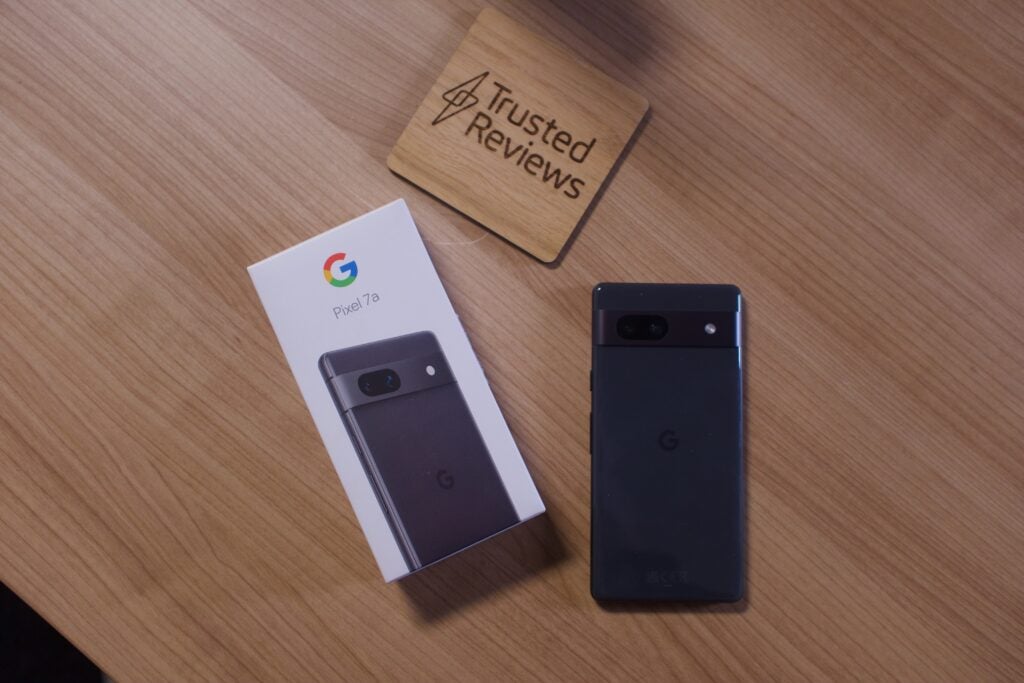
The Pixel 7a is slightly smaller overall, thanks to the shorter 6.1-inch screen, and is a little lighter. It’s one of the smaller phones around, even if I wouldn’t really call it compact. It can slip neatly into a jeans pocket or a small bag though, and I can use it comfortably with one hand.
The back is made from a nice feeling plastic, while the metal sides add a touch of class and extra robustness. Google has said this is the most durable A-series device yet and the aluminium housing is made from 100% recycled content – or about 11% of the phone itself.
Google sent over the Charcoal version for review, which is more grey than black. It’s not my favourite hue I have to admit, and the darker shade makes the back of the phone a magnet for fingerprints after just a few minutes of use. The lighter, more vibrant Coral and Sea versions are far more fun colours to go for.
The 7a has an IP67 rating, which is slightly lower than the IP68 rating for the Pixel 7 but it remains a very welcome addition in this price range.
One of the Pixel 7a’s bigger upgrades is found in the display. Like the Pixel 7, the 7a now supports up to a 90Hz refresh rate, that’s a notable improvement over the 6a’s 60Hz screen. The extra zip in scrolling is noticeable when the two phones are next to each and it generally makes moving through the UI more pleasing.
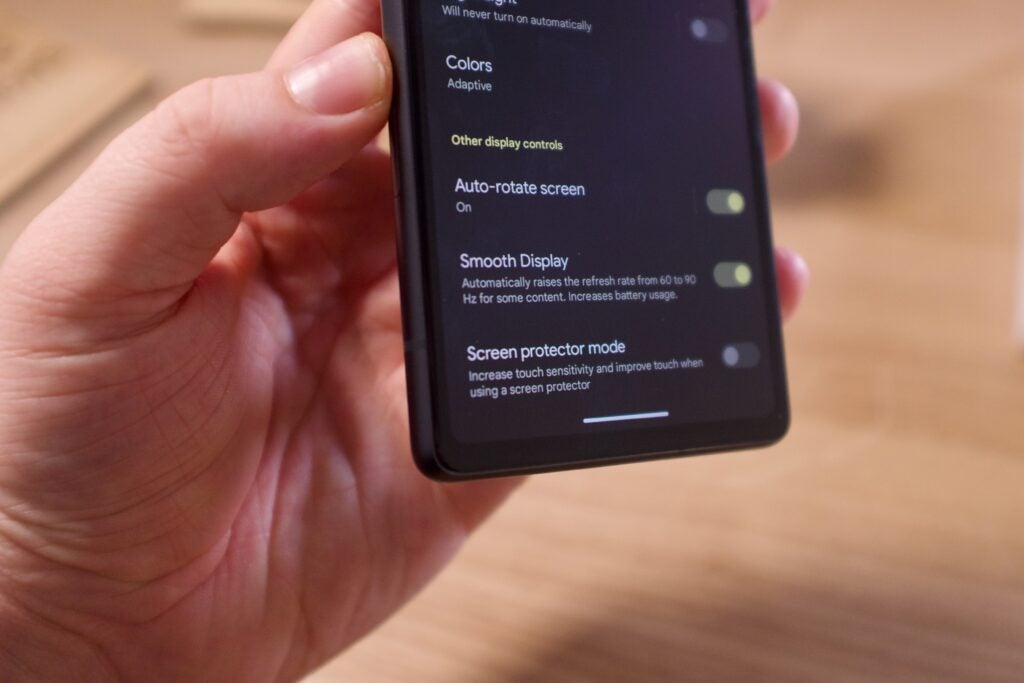
The Smooth Display option will also move between 60Hz and 90Hz, dropping down to the slower option to save battery when you’re watching video, for example.
It remains a 1080p OLED panel too, with deep blacks and plenty of detail considering there’s only a 6.1-inch space to fill. This is a good screen for the price. Dive into streaming apps like Netflix and supported content will playback in HDR (although there’s no Dolby Vision) giving an extra boost to colours.
The display also houses a fingerprint sensor for unlocking the phone. Google has had a fairly poor history of properly optimising these sensors – on the Pixel 6 series it was particularly poor – and it’s not great here.
About one of every 10 attempts to unlock the phone failed and the sensor seems to require a very specific press in a specific place. The whole sensor is just a bit small. There is Face Unlock too, and while it’s not as secure (nor can it be used for authorisations for secure apps) it is much quicker and far more reliable.
Performance
- Same Tensor G2 chip as the Pixel 7 and 7 Pro
- No charger included; wireless charging added
- 5G support and WiFi 6E
The Pixel 7a is powered by the same Tensor G2 chipset you’ll find inside the Pixel 7 Pro and the Pixel Fold.
This chip can’t rival the top options from Qualcomm or Apple and there are likely far quicker phones at this price – the newly-announced £559 Poco F5 Pro being a notable example – but Google’s approach has always favoured advances outside of pure speed. Tensor ensures camera processing is quick and that all the AI features built into the software run with minimal fuss.
It’s still a fast piece of silicon though, playing Call of Duty Mobile with few hiccups and accomplishing everyday tasks with ease. There’s also 8GB RAM and 128GB of storage – a fairly standard duo for a Pixel device.
There’s 5G (both sub6 and mmWave depending on your location) and WiFi 6E support if you’ve got a suitable router.
One of the biggest reasons to plump for the 7a over a similarly-priced phone that might charge faster or perform better in benchmarks is the Google software experience. Not only are software updates plentiful and fast, but Google has also built numerous tremendously useful AI skills into the software.
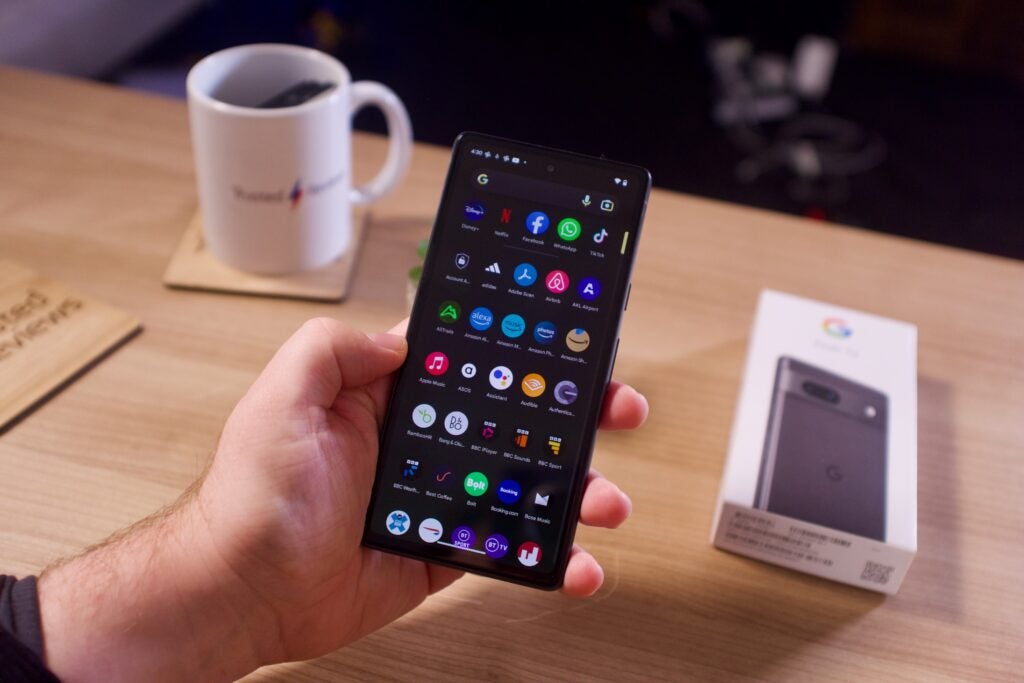
The Recorder app for example is the best in the business for transcription, while the speed at which the Live Translate services translates is fantastic and very useful. There’s also the raft of Call Assist features introduced with the Pixel 7 including enhancements to caller’s voices and easy ways to bypass long-winded phone menu options.
Camera
- Upgraded main camera with a 72% larger sensor than 6a
- Secondary 13MP ultrawide camera
- 4K, 13MP selfie camera
The biggest reason to plump for the Pixel 7a is the camera as I don’t think there’s anything this capable on the market for the price. Whether it’s daylight or night, the main camera here is reliable and doesn’t require endless tinkering to get good shots all the time.
Google has upgraded the main camera when compared to the 6a, with a new 64MP sensor doing the majority of the heavy lifting. There’s also faster Night Sight (that’s the low light shooting mode that combines multiple exposures to boost light) thanks to the extra speed of the Tensor G2, and a new 13MP ultrawide lens.
There’s no dedicated zoom camera, but I have found the AI-influenced Super-res Zoom churns out better results than I would expect from digital zoom. Next to a standard iPhone 14’s zoom, the Pixel 7a can retain more detail at 2x.
It’s hard not to be impressed with the images I have taken with the Pixel 7a, from the detail retained in the dog’s fur and the food to the natural colours and noise-free night shots. Google continues to use contrast-heavy processing, with a strong focus on bringing out colours and deepening shadows. Colours do pop, but not with the same burst of saturation found on the Samsung Galaxy S23, instead they’re more realistic and less garish.

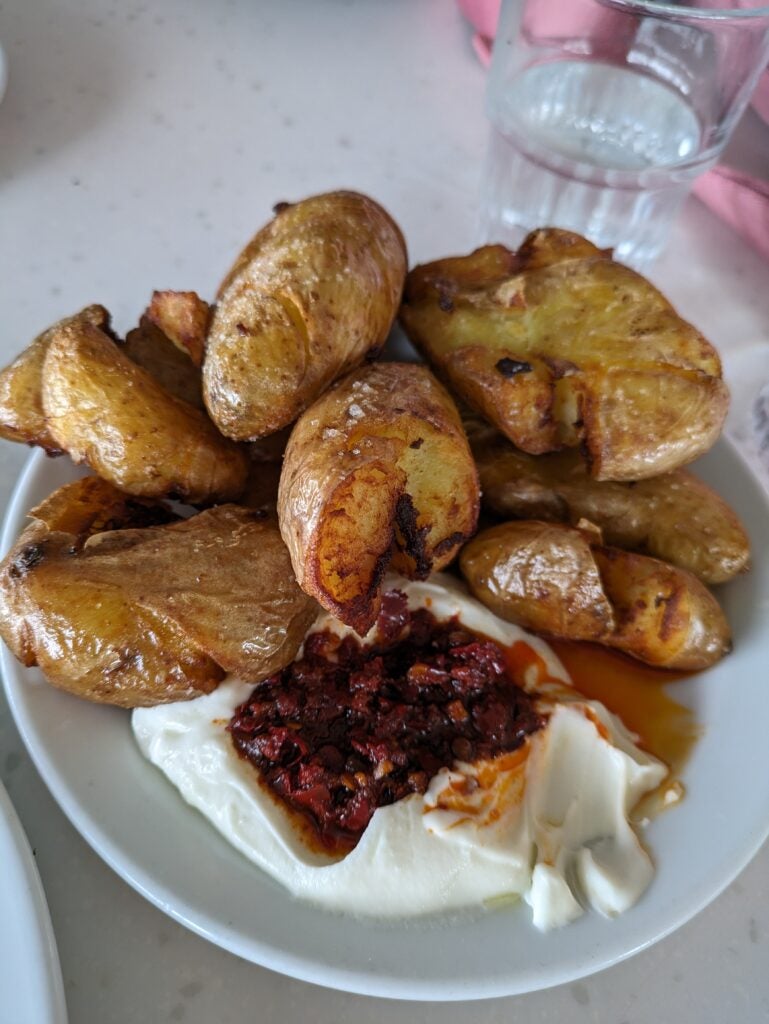
This skill at producing colours continues when you’re shooting portraits, with the Pixel 7a doing a fantastic job at producing accurate varying skin tones. It can be hard to differentiate the Pixel 7 Pro and Pixel 7a’s results when you’re taking photos during the day.
Google has done an excellent job of ensuring the colours from both rear cameras match up, so you can jump between the two and get a very similar image. There’s no dramatic increase in saturation or contrast when you flip between the wide and ultrawide – an issue I have found with many phones at this price.
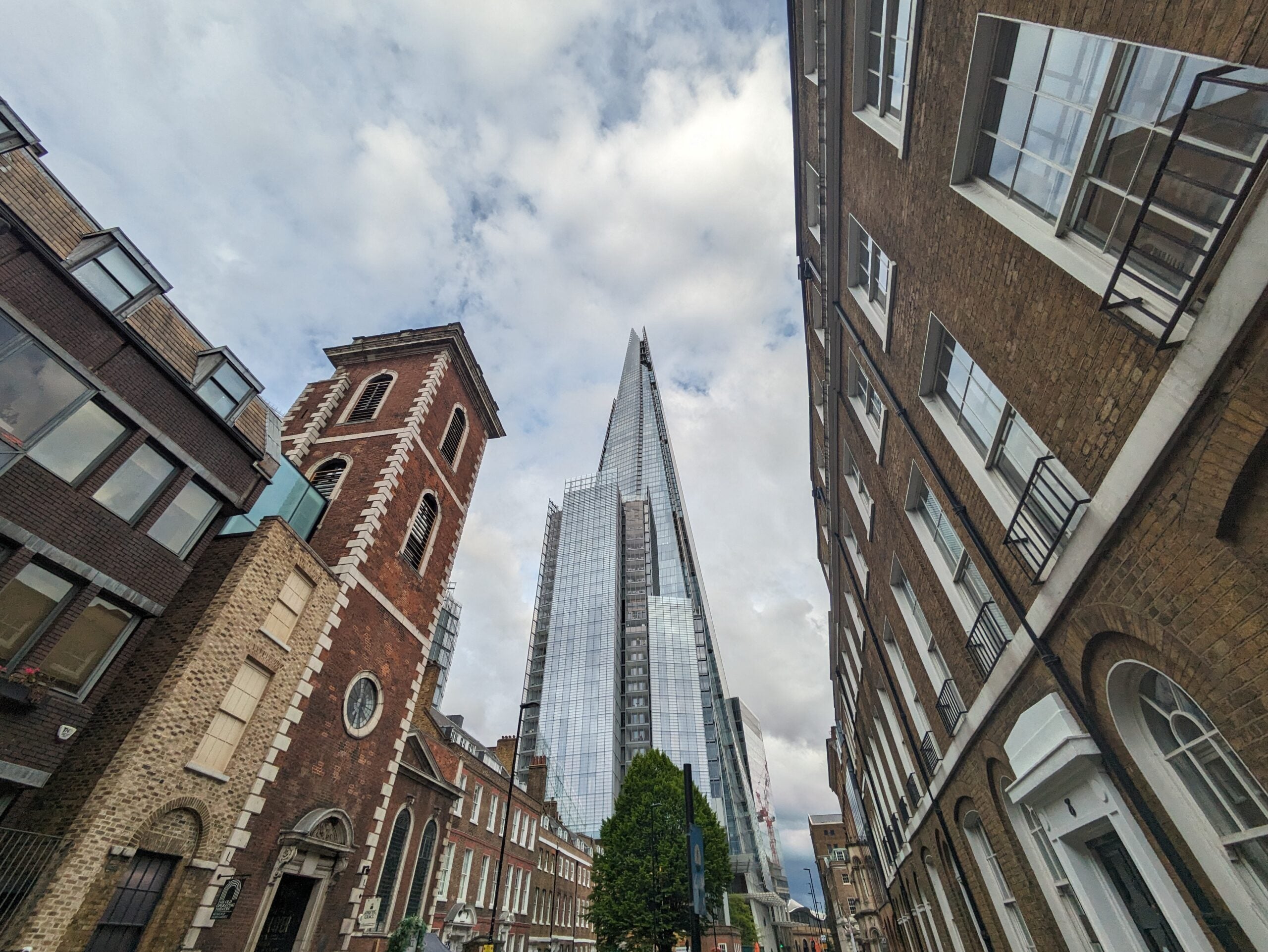
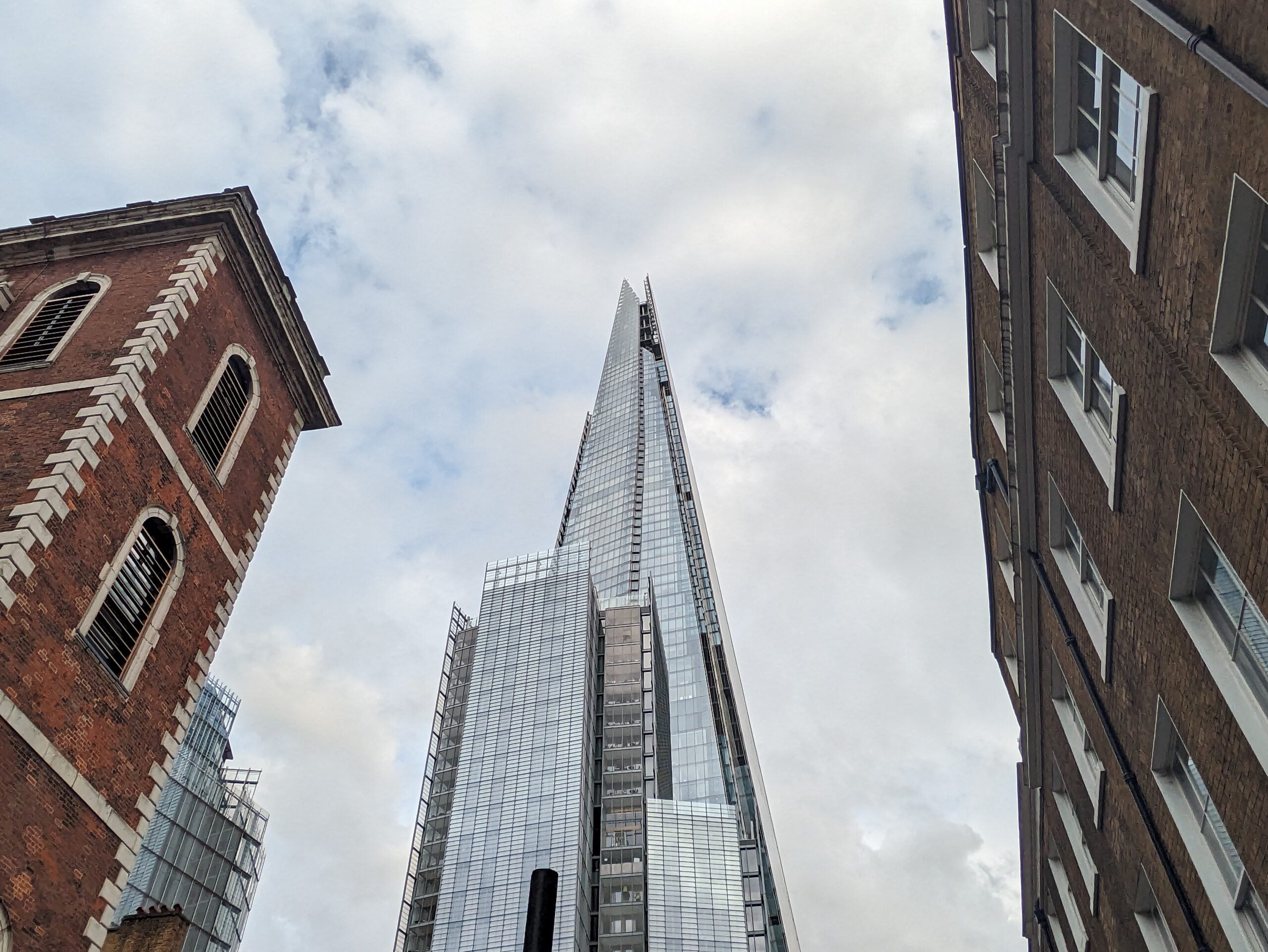
Night Sight is certainly faster and more reliable than the Pixel 6a, often capturing a clear and true-to-life image in a matter of seconds. In some instances, I found the night performance better, faster and more reliable than on an iPhone 14 Pro Max.


Video performance is strong too, capturing stable video at varying resolutions and frame rates (up to 4K 60fps). The tasteful colour profiles from the photography side are visible here too. I am also a fan of the front 13MP camera, which continues the rear cam’s ability to capture nice, and accurate, skin tones.
Battery Life
- No charger included
- It does support wireless charging
- Heavy users will struggle to get through a full day
One area where the Pixel 7a does feel slightly antiquated is the charging speeds and its overall battery performance.
While I am glad Qi charging – a feature that made the $299 Google Nexus 4 standout way back in 2012 – has been added, both the wireless and wired charging speeds are slow. When a phone like the Realme GT3 can get a full 100% charge in less than 10 minutes, the 110 minutes required here is a bit of a shame.
It doesn’t help that during the review period I, on a couple of occasions, needed to give the Pixel 7a a charge mid-way through the day – a situation where quicker charging speeds are especially notable.
For the most part, I usually felt confident the Pixel 7a would last a full day with it generally hitting 5-10% when I came to plugging it in. However, on some busier days when my screen on time was above five hours, I would need to give the phone an evening juice-up to make sure I wouldn’t be left with a completely depleted device later in the evening.
This sort of endurance is to be expected from a phone that is smaller and, as a result, has a smaller battery. But, I would be hard-pressed to truly recommend this to something who is constantly using the phone, with the screen on, all day.
In more synthetic tests, the phone performs fairly well. An hour of Netflix streaming ate through 6% which is better than I would expect while leaving the phone unplugged over an 8-hour period with the screen off saw a drop of only 3%.
Should you buy it?
You want a great phone for a good price: The Pixel 7a ticks a lot of boxes and comes with features often ditched at this price. A great camera, wireless charging, a good IP rating and a 90Hz screen to name but a few.
You’re after a multi-day device: The battery life isn’t bad – it’s just not a phone that’ll handle extended heavy use throughout a day and it won’t go multiple days between charges. It doesn’t help that charging is slow compared to the best Android phones.
Final Thoughts
Wireless charging, a better camera, a more capable chipset and a faster display make the Pixel 7a one of the best mid-range phones. It’s not entirely perfect, but I haven’t been as happy with a phone under £500/$500 for a while.
There was a lot of talk ahead of the release about how the price increase would lead to a far less tempting proposition. I think it’s in fact the opposite – the improvements and additions make this a far more complete and tempting proposition than the Pixel 6a.
Yes, you can find phones at a similar price with better screens or snappier chips – however none of them manage an experience quite as complete as this. From the software full of innovative Google tweaks that are hard to leave behind, to the camera reliability in various conditions to the handy extras like an IP rating and Qi charging this is a phone that’s about more than specs on a page.
If only the battery life was a little better.
Jargon buster
mAh
An abbreviation for milliampere-hour and a way to express the capacity of batteries, especially smaller ones in phones. In most cases the higher the mAh, the longer the battery will last but this isn’t always the case.
5G
Offering faster download and upload speeds when compared to 4G. Great for game streaming and HDR video playback. Not supported everywhere yet and speeds vary wildly.
IP rating
An abbreviation for ‘Ingress Protection Code’, which lets you know to what extent a device might be waterproof or dustproof.















